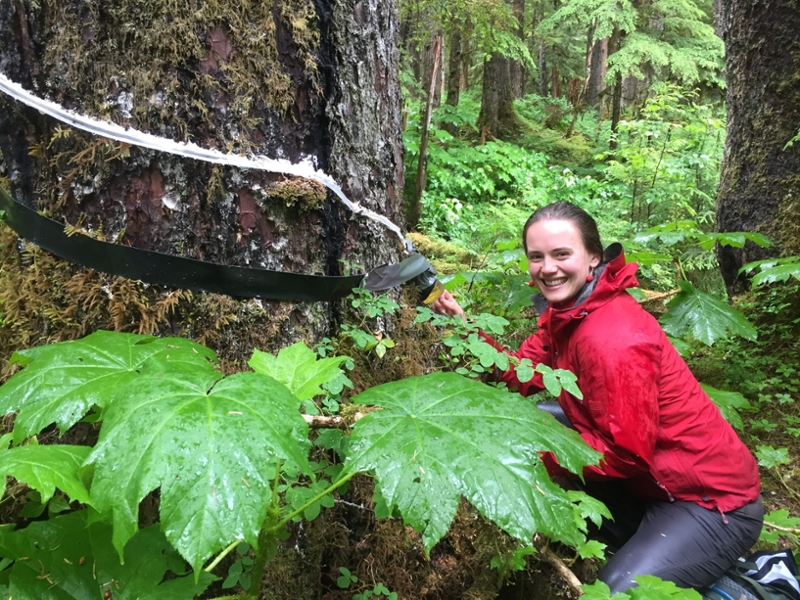Waiting for rain in the temperate rainforest

I am not a morning person, and pouring rain isn’t usually the type of weather that makes me want to jump out of bed quickly. But at the end of last summer, I found myself on several dark and rainy 4 A.M. drives, groggily gulping coffee as I headed for my field sites in the Fish Creek watershed on the north end of Douglas Island.
We had been waiting for a storm for months, but typically rainy Juneau had seen an epic sunny streak and record low rainfall all summer. Though marvelous for enjoying the outdoors on my own time, it was less convenient for my summer fieldwork plans. My research examines dissolved organic matter composition and flux dynamics from different types of small watersheds within the Fish Creek watershed (a forested upland, a forested wetland, and a poor fen). This summer, I wanted to track how the type and amount of carbon exported from each headwater stream and from Fish Creek itself changed throughout the course of a big rainstorm.
It rains a lot in Southeast Alaska, and storms can cause massive flows of water from small watersheds into the coastal ocean. Since most stream sampling is done in dry, low streamflow weather, there is not much known about stream chemistry during high discharge conditions, despite the fact that a massive amount of water and material gets transported during big storm events. This material fuels the productive coastal ecosystem that supports Southeast Alaska’s rich fisheries. Along with my UAS colleagues Jason Fellman and Eran Hood, I wanted to see how big rain events change the way that watersheds process and release carbon to better understand the movement of carbon from land to ocean in the region. But to do that, we needed heavy rain.
After weeks of monitoring the annoyingly sunny forecast, we found a weather system moving towards us that looked promising. We wanted a complete picture of how the carbon being exported changed as the water in the streams rose at the beginning of the storm, and then lowered as the rain lessened. That meant we needed to sample several times a day, hiking through steep, muddy woods carrying equipment each time.
As we turned onto the road to the sites the second early morning, a black bear leapt over the guardrail. By the time we were done collecting samples our first site, dawn had arrived and the heavily pouring rain felt like a treat after months of sunny impatience. The trail down from the upland site had turned into a mudslide, and we ran and slid down it in record time. In the end, we got what we wanted—a dataset covering organic and inorganic carbon in each of the streams throughout the storm. Soon, we will have a complete story of what happens in Southeast Alaskan streams during a rainstorm, and be one step closer to a complete picture of how processes on land and sea are intertwined here in our rainy coastal forest.
Megan is a visiting graduate student from Florida State University. Megan’s work is funded in part by the National Science Foundation Graduate Research Fellowship Program, and supported by the ACRC. Learn more about the stream carbon project.